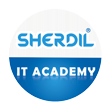Course Outline
Prequisites:
- Familiarity with the Linux command line
- An understanding of networking concepts
- Know-how of web applications work
Docker:
- Introduction to Docker
- Install & Setup Docker on Linux
- Remove, Downgrade, Upgrade
- Storage & Logging driver
- Docker Registry
- Docker Images
- Docker Containers
- Docker Diagnose
- Docker file
- Docker Compose
- Docker Swarm
- Docker Stack
- Docker Networking
- Docker Services
- Docker Volume
- Docker Swarm vs Kubernetes
Getting Started With Kubernetes:
- Kubernetes and its importance
- Background & future
- Need of Kubernetes & Big picture
- What is Kubernetes for
Before Kubernetes:
- Microservices, What, Why and How
- Containerization and Kubernetes
- Docker and Container Lifecycle
- Working with Docker images
Kubernetes Walkthrough:
- Architecture of Kubernetes
- Cluster Architecture
- Kubernetes core concepts
- Overview of other installations’ options
- Kubernetes API primitives
Application Enrollment, Configuration:
- Pods, labels/selectors, replication controllers, services, API
- Services and other network primitives
- Deployments, jobs, and services
- Declarative vs imperative mode
- Getting Started with YAML
- Interacting with kubectl
Observability & Maintenance:
- Pods health checks
- Readiness/Liveness Probe
- Understand how to monitor applications.
- Manage application logs.
- Use label selectors to schedule Pods.
- Understand how resource limits
Application Deployment & Lifecycle Management:
- Understand Deployments and how to perform rolling updates and rollbacks.
- Know various ways to configure applications.
- Know how to scale applications.
- Understand the primitives necessary to create a self healing application
Storage / Persistence:
- Understand persistent volumes and know how to create them.
- Understand access modes for volumes.
- Understand persistent volume claims primitive.
- Understand Kubernetes storage objects.
- Know how to configure applications with persistent storage.
Services & Networking:
- Services Know how
- Understand the networking configuration on the cluster nodes.
- Understand Pod networking concepts.
- Understand service networking.
- Deploy and configure network load balancer.
- Know how to use Ingress rules.
Troubleshooting Best Practices:
- Troubleshoot application failure.
- Troubleshoot control/worker plane failure
- Troubleshoot networking.
Bonus Topics:
- Managed Kubernetes
- Getting Started with Kubernetes on EKS
- Guide to pass CKAD / CKA exam
There are no items in the curriculum yet.
